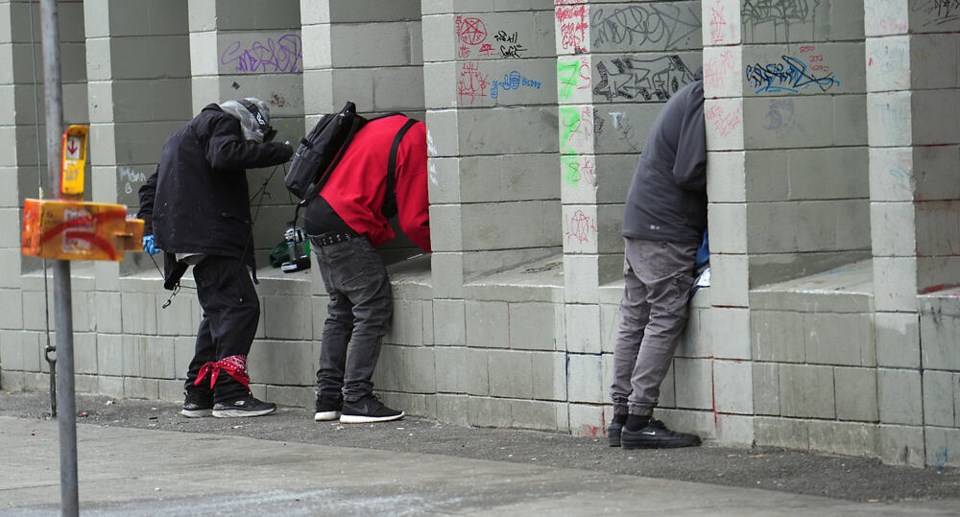While we can’t eliminate overnight the social conditions that have led to drug addiction and its attendant social disruption, we can take concrete steps to put things right.

A commentary by a Victoria city councillor. These are her views, not the position of council.
Is Victoria finally ready to tackle the problems of crime and disorder on our streets?
Victoria city council’s long-awaited blueprint for making the city “a livable, safe, and welcoming community” has just been released and endorsed by city council. This report, titledVictoria’s Community Safety and Well-being Planlays out a wide-ranging and comprehensive plan with 99 recommendations.
This report is timely because crime and fear of crime on our streets and in our neighbourhoods remain the number one concern of residents and business owners.
The costs of disorder on our streets to Victoria taxpayers are large: $15 million in operational costs and more than $3 million to social services providers over two years.
The toll of human misery evident on our streets cannot be reckoned in dollars but is heartbreaking to witness.
Is the community safety and well-being plan the answer to the problems that have bedevilled us for a decade? Do we now have a pathway out of the blight of drugs and hopelessness on our streets?
I wish that it were, but I am afraid that it is not.
The report fails because it misses one clear and ineluctable truth — the disorder on our streets is the result of the city’s failure to come to grips with illegal drug use. The report takes us in a different direction. Rather than tackle policies that address open drug use and its attendant problems, the report explores other causes, including racism, “classism,” poverty, inequality and homophobia.
There is no evidence to suggest that there has been a spike in racism, homophobia and inequality that correlates with the spike in crime and disorder on our streets. This report would have us running off in all directions trying to solve an array of social ills that are not in the remit of Victoria city council and would take years to implement.
The grand experiment — Victoria “leading” the region in the support of needle exchanges with yellow needle collection boxes in public places, Island Health’s “safe” consumption site on Pandora Avenue, de-criminalization of small amounts of illegal drugs, encampments in our parks and on our streets; in sum, the normalization of open drug use and addiction on our streets — has been an abject failure.
While we can’t eliminate overnight the social conditions that have led to drug addiction and its attendant social disruption, we can take concrete steps to put things right. Our problems in Victoria are not unique, but they are especially severe because of decisions made by this council and previous councils over the past decade.
To begin to reclaim our city, we must refocus our efforts on initiatives that are doable and that tackle the root cause of our problems.
And we must cease enabling the provincial government in its dereliction of responsibility to care for the hundreds, or thousands, of people who are on our streets and in supportive housing.
Here is an action plan:
• The city must inform the provincial government that we will henceforth accept only supportive housing (housing for people under care) that leads to rehabilitation and a pathway to a better life.
• The city must demand that B.C. Housing phase out any supportive housing in Victoria that allows illicit drugs, alcohol or weapons. Such housing must be converted to drug-free transitional or treatment facilities.
• The city must demand that Island Health cease operating a consumption site in the city.
• The city must end the financial support or tax exemption to social service programs that permit illicit drug use. The city must promote rehabilitation. We need more agencies like the Salvation Army and facilities like Our Place’s New Roads in View Royal.
• We must ask the province to exempt supportive housing from the Residential Tenancy Act to permit managers of supportive housing to remove tenants who disrupt the lives of other tenants or traffic in drugs. Supportive housing in Victoria without safeguards of removing criminal and other disruptive elements have become “war zones” and threats to the safety and well-being of other tenants.
• We have the bylaws to ensure safe streets. We need to enforce them. This means enhanced police and city bylaw presence on our streets, more foot patrols and the hiring of police officers who can handle traditional police work as well as outreach to street communities in partnership with city bylaw.
• The City of Victoria must be prepared to support involuntary confinement for those who are a danger to themselves and others. Surprisingly, there is no mention of involuntary treatment or confinement in the report despite the fact that the provincial government has recently acknowledged such a need.
We must continue to help the vulnerable, advocate for care and support for those who are in need — but we must stop promoting Victoria as a centre for free drugs and a supportive environment for self-harm and anti-social behaviour.
Ten years ago, I did not hesitate to walk home after an evening meeting. Today, I would never consider it. We have allowed the degradation of our streets and public spaces to develop to this state.
Successive city councils, with fanciful ideas of defunding the police, welcoming the unhoused/drug addicted to come to Victoria and the normalization of illegal drug use on our streets has allowed this to happen.
It is time to tackle the drug problem and make Victoria a truly safe and welcoming city.